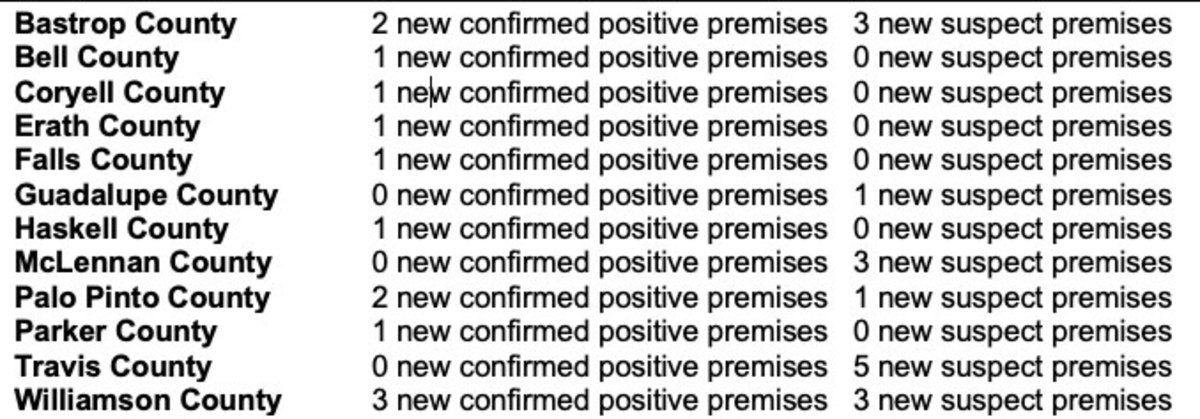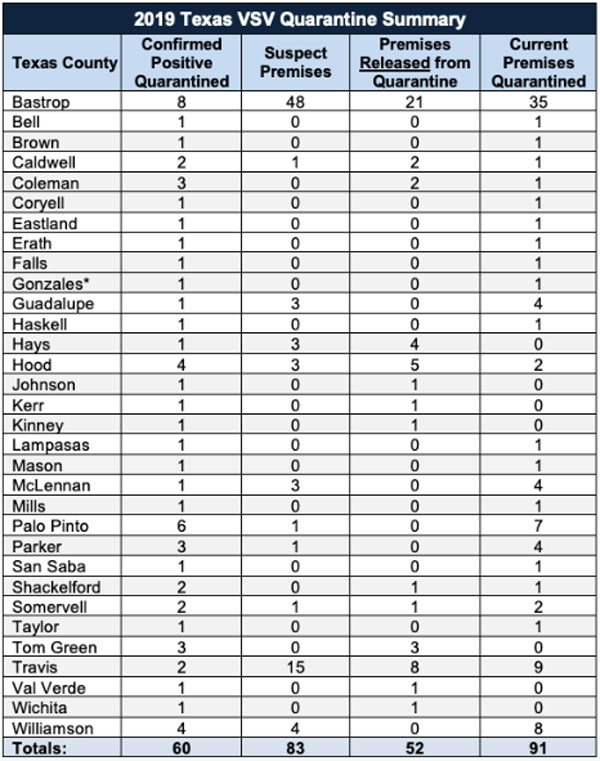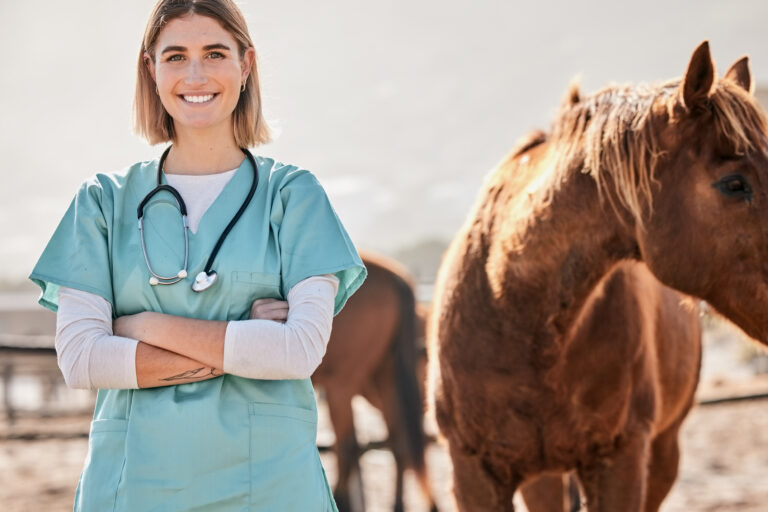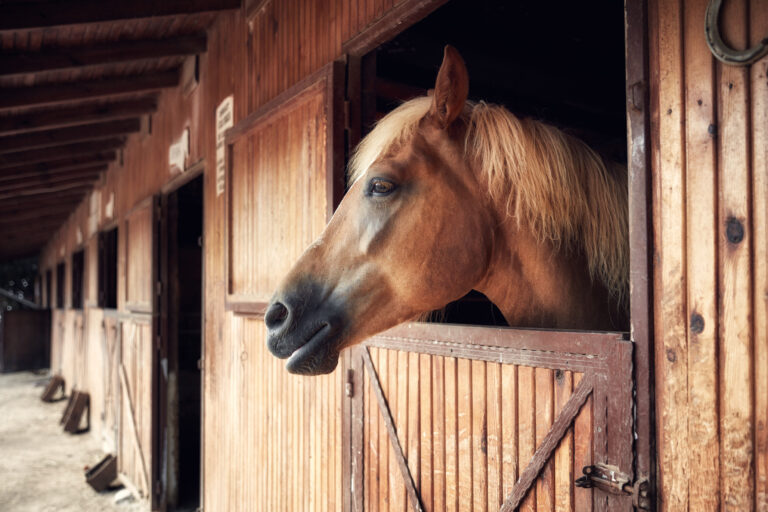
Since Friday, August 2, 2019, the Texas Animal Health Commission has received reports of 13 new confirmed cases of vesicular stomatitis virus (VSV) and 16 new suspect cases.
The newly confirmed and suspect premises are under quarantine by the TAHC. Affected horses and cattle will be monitored by regulatory and authorized veterinarians until premises are eligible for quarantine release 14 days after clinical VSV signs are observed.
Classification of Cases
Premises that have laboratory diagnostic confirmation of VSV are categorized as confirmed positive premises. Once a county is confirmed as VSV-positive, new premises presenting with clinical signs of VSV in that county are not required to be tested for confirmation of the disease, but the premises will be quarantined and classified as a suspect premises.
Summary of the Outbreak
The 2019 VSV outbreak began on June 21, 2019, when the National Veterinary Services Laboratories (NVSL) in Ames, Iowa, confirmed the first VSV-positive premises in Kinney County, Texas. All cases of VSV had been found on equine premises until July 30, when the first case of VSV was confirmed in cattle in Gonzales County. New Mexico, Colorado, Wyoming and Oklahoma subsequently broke with cases which were confirmed by NVSL.
To date, 143 premises in 32 Texas counties have been quarantined for VSV. Currently affected counties include: Bastrop, Bell, Brown, Caldwell, Coleman, Coryell, Eastland, Erath, Falls, Gonzales, Guadalupe, Haskell, Hood, Lampasas, Mason, McLennan, Mills, Palo Pinto, Parker, San Saba, Shackelford, Somervell, Taylor, Travis and Williamson Counties. Of the 143 premises quarantined, 52 have been released.
Several states are imposing enhanced entry requirements on Texas livestock due to the VSV cases. For information, contact the state of destination. For a list of state animal health offices visit this web page.
If you suspect your client’s horse has VSV, contact your TAHC Region Office for paperwork, procedures, and important sample submission information.

What Equine and Cattle Owners Need to Know
- VSV is a viral disease that primarily affects horses and cattle.
- In the past decade, the Southwestern and Western United States have experienced a number of VSV outbreaks. Outbreaks usually occur during the warmer months, often along waterways.
- VSV normally has an incubation period of 2-8 days before the infected animal develops blisters that swell and burst, leaving painful sores. The virus can be transmitted through direct contact with infected animals or by blood-feeding insects.
- If VSV is confirmed, infected animals are quarantined for 14 days after clinical signs of lesions are observed. This short-term quarantine helps prevent the movement of animals and the spread of the disease to other premises, fairs or markets.
Strategies for Preventing VSV
Even with the best defensive measures, VSV could infect a herd. However, these tips may help protect livestock:
- Control biting flies.
- Keep equine animals stalled or under a roof at night to reduce exposure to flies.
- Keep stalls clean.
- Don’t visit a ranch that’s under quarantine for VSV. Wait until the animals have healed.
TAHC sends out VSV updates every Friday and all cases will be reported to the Equine Disease Communication Center. For VSV history and past TAHC updates click here.
To view the USDA 2019 VSV situation reports click here.




